Healthy Food Trend: Boost the Quality of Your Grains with Buckwheat
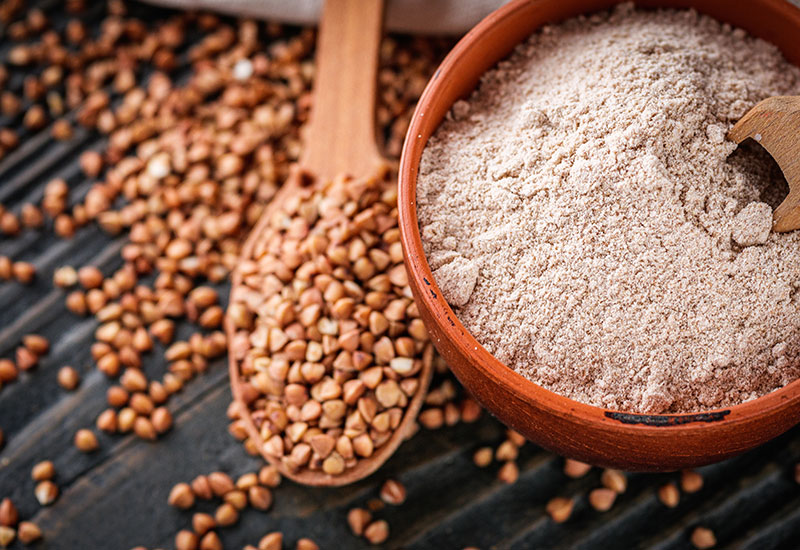
The following article was written by Heinen’s Chief Dietitian, Melanie Jatsek RD, LD.
Have you ever seen a pair of disguise glasses with the oversized nose, jet-black bushy eyebrows and furry mustache? That’s buckwheat. The name itself leads you to believe it’s wheat, only it’s not. Remove the misleading name and you’ll discover that buckwheat is a non-wheat, gluten-free, grain-free pseudocereal—another word for a seed that’s consumed as a grain or cereal, even though it’s not. Another example of a pseudocereal you may be familiar with is quinoa.
The flavor of buckwheat is also nothing like wheat. This ancient fruit seed has a nutty, earthy taste combined with a pleasant chewy texture when cooked.
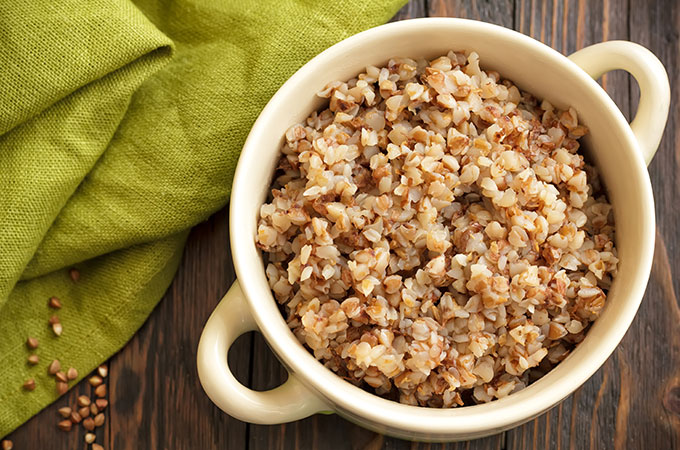
The Boastful Benefits of Buckwheat
Although it’s technically a seed, buckwheat is classified as a whole grain. If you’ve mastered the 7 Fx Pillars, I don’t have to tell you that buckwheat falls under Pillar 5: Choose whole grains, preferably sprouted.
Whole grains contain all the essential parts and naturally occurring nutrients of the entire grain seed in their original proportions. This means that 100% of the original kernel must be present to qualify as a whole grain. With the entire seed comes more fiber, protein, energy-boosting B-vitamins, bioavailable minerals, and inflammation-fighting antioxidants.
In case you think buckwheat is an ordinary, run-of-the-mill whole grain, think again! Take a look at each of these dietary components and I’ll let you decide if it deserves superfood status.
- Buckwheat contains resistant starch, a type of fiber fermentable by healthy gut bacteria in your colon. This is good news for everyone, especially those with diabetes, elevated blood pressure, or high cholesterol. Buckwheat can help you manage all three!
- Buckwheat is a complete protein. This means it has all nine of the essential amino acids your body can’t make and must get from food.
- Both buckwheat and whole wheat offer plenty of B-vitamins and bioavailable minerals, but buckwheat gives you more vitamin E, copper, magnesium, manganese, and iron.
- Antioxidants help counterbalance the damaging effects of free radicals in your body. Buckwheat supplies plenty of antioxidants like quercetin for immune health and rutin for heart health.
Does buckwheat qualify as a superfood? I think so!
Where to Find Buckwheat at Heinen’s (and what to do with it)
It all starts with buckwheat groats—the tiny pyramid-shaped seeds of the flowering buckwheat plant. To unlock the nutrition inside these little seeds, they must be roasted or sprouted before eaten.
- Wolff’s kasha: A roasted buckwheat product with one simple ingredient: 100% pure buckwheat. Kasha is extremely versatile and can be served as an entree, side dish, stuffing, in soups and salads, and as a wholesome breakfast cereal.
- Lil Bucks organic sprouted buckwheat crunch (available in original and cinnamon flavors): Here buckwheat groats are soaked and sprouted, making them easier to digest and absorb. These little USDA organic nuggets add just the right amount of crunch to homemade granolas, energy bars, salads, overnight oats, and smoothie bowls.
- Lil Bucks organic clusterbucks (available in chocolate sea salt and snickerdoodle flavors): I highly recommend trying these superfood granola clusters made from sprouted buckwheat groats, pumpkin seeds, coconut chips, coconut oil, and a touch of maple syrup. They’re the perfect low sugar snack when your sweet tooth comes calling.
- Bob’s Red Mill buckwheat flour: When buckwheat groats are ground you get a whole grain flour suitable for making homemade buckwheat noodles (aka. soba noodles) and quick breads like pancakes, scones, biscuits and banana bread. Feeling adventurous? Try these PB & J Pancakes with buckwheat flour.
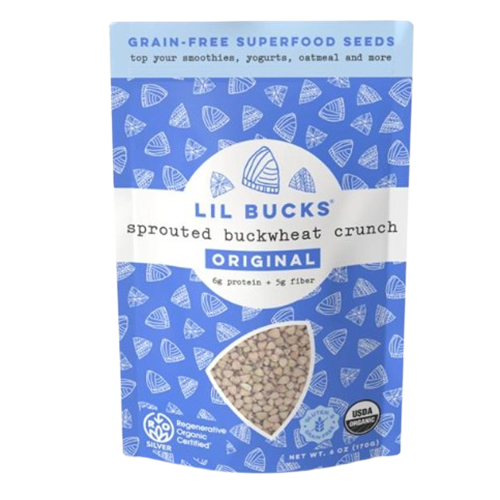
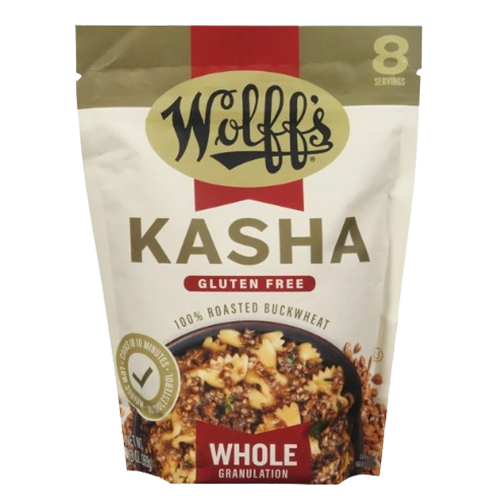
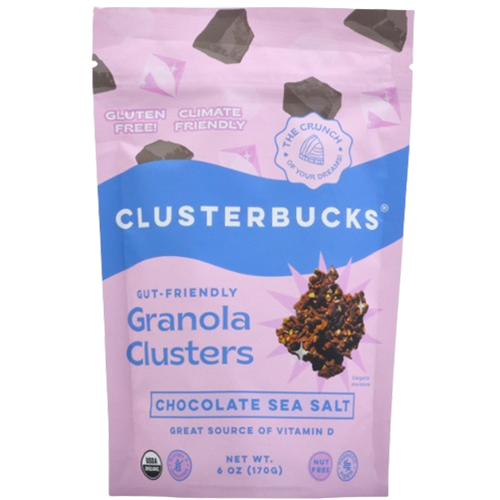
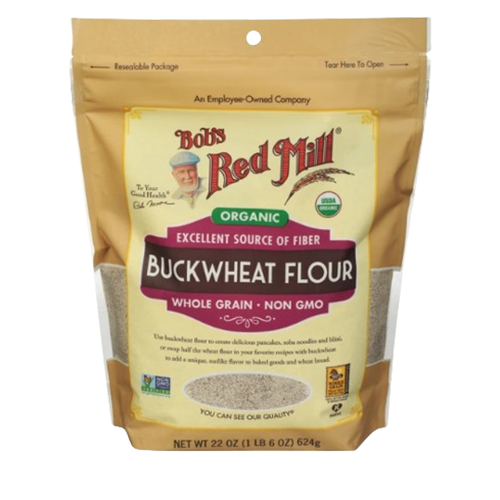
Swapping traditional wheat flour with buckwheat flour in baked items like cake, pizza and yeast breads will yield a heavy, crumbly result. This happens because buckwheat contains zero gluten—a structural protein in wheat flour that acts like a binder, holding food together and adding a “stretchy” quality. You can still use buckwheat flour in these recipes, but in smaller amounts. Replacing 25-50% of regular flour with buckwheat flour will give you the benefits of buckwheat without disturbing the texture.
Key Takeaway
No one likes to eat stale bread, but when we fall into the rut of buying the same food every week, eating can begin to feel lackluster. Healthy eating should be enjoyable and fun! Sprinkle some excitement into your shopping routine by adding one new item to your cart each week, beginning with buckwheat! A sprinkle of Lil Bucks on a salad or a simple kasha pilaf may be all it takes to rekindle your commitment to healthier living. It’s easier than you think!


